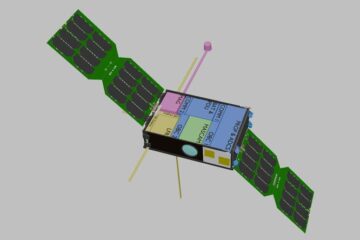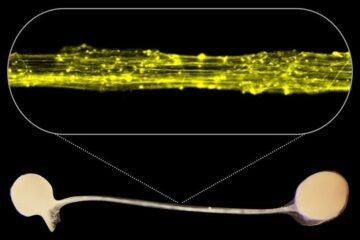Virtual reality could help diagnose heart conditions

Virtual reality that allows doctors to visualise the heart in three dimensions could help in the diagnosis of heart conditions. A pilot study published today in the open access journal Cardiovascular Ultrasound reveals that doctors can diagnose heart conditions quickly and easily from virtual three-dimensional animated images or ’holograms’ of the heart. Three-dimensional (3D) holograms allow doctors to ’dive’ into the beating heart and see interior parts of the organ.
Annemien van den Bosch and colleagues, from Erasmus MC University Medical Center Rotterdam in The Netherlands, projected ultrasound-generated 3D images of hearts (echocardiograms) in a specially designed four-walled room called the I-Space. In the I-Space, images are projected on three of the walls and the floor, which results in an animated hologram floating in space in front of the viewers. The viewers wear a pair of glasses with polarising lenses allowing them to see the hologram with depth.
Van den Bosch et al. asked ten heart specialists to analyse the holograms of patients with a heart defect that affects the shape of an inside part the heart, and of patients with a healthy heart. The doctors learnt how to use the equipment and were able to virtually ’cut through’ the heart to see inside, using a virtual pointer, within ten minutes. The ten doctors could all distinguish healthy from unhealthy hearts and make the correct diagnosis within only ten minutes.
“At the moment, I-Space technology is only available in a few dedicated research centres throughout the world” write the authors, and the combination of virtual reality and 3D echocardiography is uncommon. However, it has many potential applications and might lead to a better understanding of the anatomy of the heart.
Media Contact
All latest news from the category: Health and Medicine
This subject area encompasses research and studies in the field of human medicine.
Among the wide-ranging list of topics covered here are anesthesiology, anatomy, surgery, human genetics, hygiene and environmental medicine, internal medicine, neurology, pharmacology, physiology, urology and dental medicine.
Newest articles

Caution, hot surface!
An international research team from the University of Jena and the Helmholtz Institute Jena are demystifying the mechanisms by which high-intensity laser pulses produce plasma on the surface of solids….

Exploring the Asteroid Apophis With Small Satellites
In five years’ time, a large asteroid will fly very close to Earth – a unique opportunity to study it. Concepts for a national German small satellite mission are being…

First model of the brain’s information highways developed
Our human brain is not only bigger and contains more neurons than the brains of other species, but it is also connected in a special pattern: Thick bundles of neurons…





















